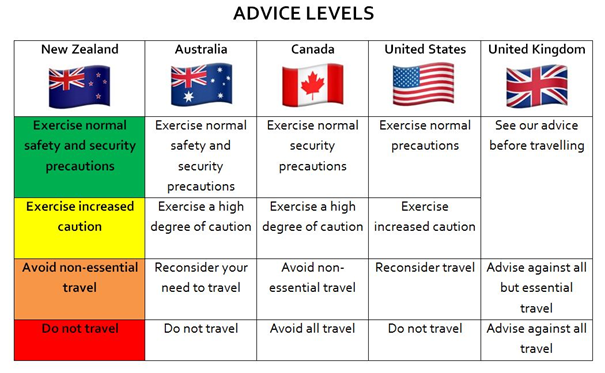News:
From today (17 August 2018), the Ministry of Foreign Affairs and Trade will use new descriptions for the four headline assessments it makes about destinations around the world.
The Ministry currently produces travel advisories on 135 locations. These are the Government’s official source of travel advice for New Zealanders living and travelling overseas.
Previously each travel advisory was headed by a statement of risk. From today, advisories will be headed by one of the following four levels:
- Exercise normal safety and security precautions (previously “no significant security risk”)
- Exercise increased caution (previously “some risk”)
- Avoid non-essential travel (previously “high risk”)
- Do not travel (previously “extreme risk”)
Carl Reaich, manager of MFAT’s Consular Division, says:
“We want to make our travel advice as clear as possible, so people can make their own informed decisions about where to travel and what precautions to take. We also want to make it easier for people to compare our travel advisories with those issued by other countries.”
“We are not changing the way in which advisories are prepared, the substance of the advisories, or the thresholds for the different levels. We are simply changing how we describe the four levels, so they offer advice instead of stating possible risks.”
The following table sets out the travel advisory levels used by New Zealand, Australia, Canada, the United Kingdom and the United States:


